Improve your Marketing Ops every week
Subscribe to our blog to get insights sent directly to your inbox.
Confront your process problems head on with a Sherpa by your side.
Explore support options that are tailored to meet you wherever you are on your climb.
Browse our pioneering Agile marketing courses
Learn from the stories of marketers already on the road to process improvement.
Featured Resource

State of Agile Marketing
Learn from 8 years of study on how marketers are increasing their agility.
Download Report
Recently, the Tenon team was thrilled to host a webinar featuring AgileSherpa’s Co-Founder and CEO, Andrea Fryrear. The event also featured Muhammad Yasin, VP of Marketing for High Alpha, and Tenon’s Chief Product Officer, Ben Ivers.
Together, we explored the benefits of Agile marketing methodologies – from adopting an Agile mindset to tactics for implementing Agile – and wrapped the session with a walkthrough of Tenon’s Agile marketing Capabilities.
If you missed the virtual event, we’ve got you covered: you can watch the full recording on-demand, or take a look at the takeaways below.
For teams unfamiliar with Agile marketing, we opened with the basics: Agile marketing is an iterative and flexible approach to marketing that emphasizes collaboration, adaptability, and customer-centricity. It involves breaking marketing tasks into smaller, manageable chunks, working in cross-functional teams, and regularly reassessing and adjusting strategies based on data and customer feedback.
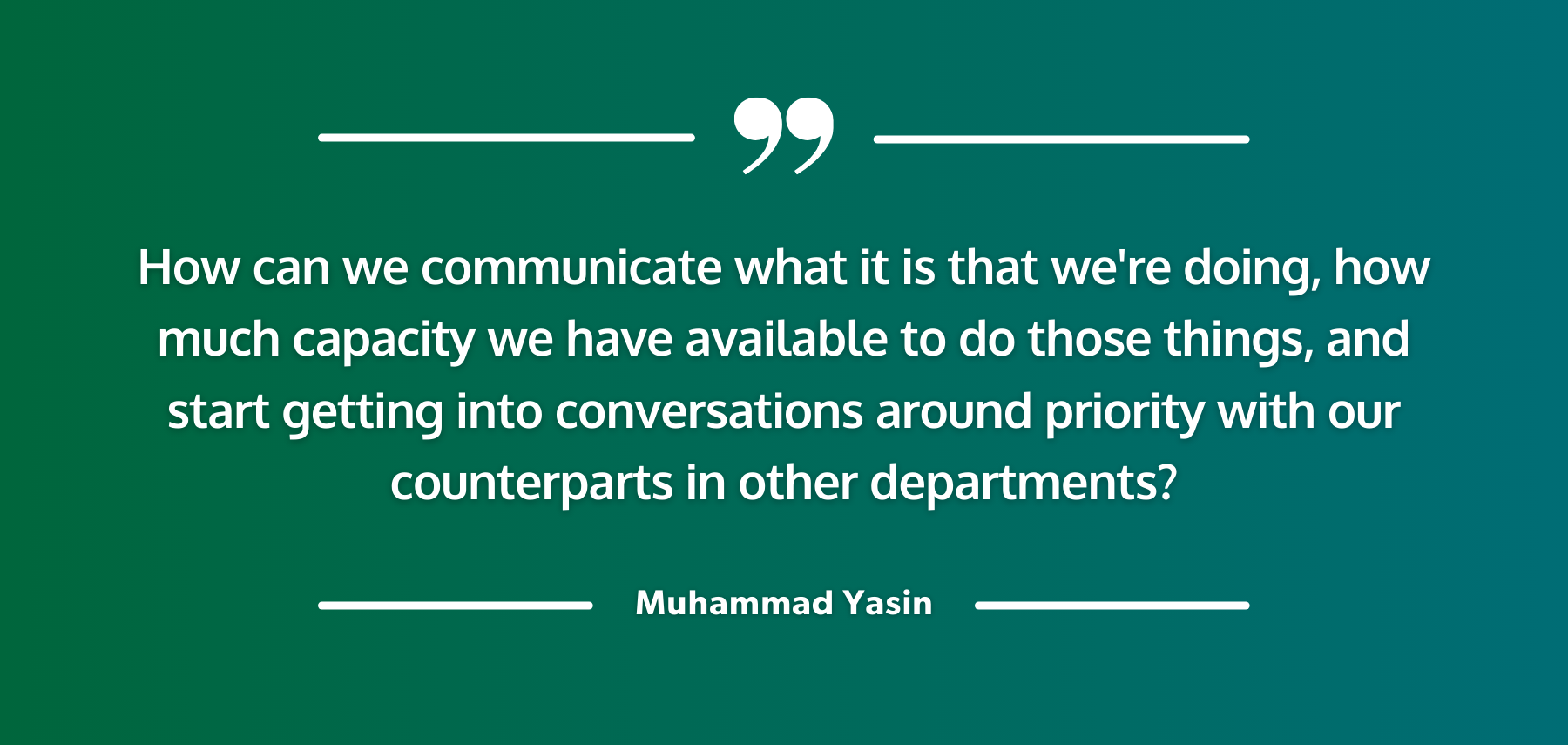
This methodology allows marketers to respond quickly to shifting priorities, insights, and feedback, allowing them to deliver more relevant and effective campaigns.
Marketers are gravitating towards Agile marketing for a whole slew of reasons, including:
This methodology enables marketing teams to stay responsive to shifts in their markets, while optimizing internal processes that foster a culture of continuous innovation.
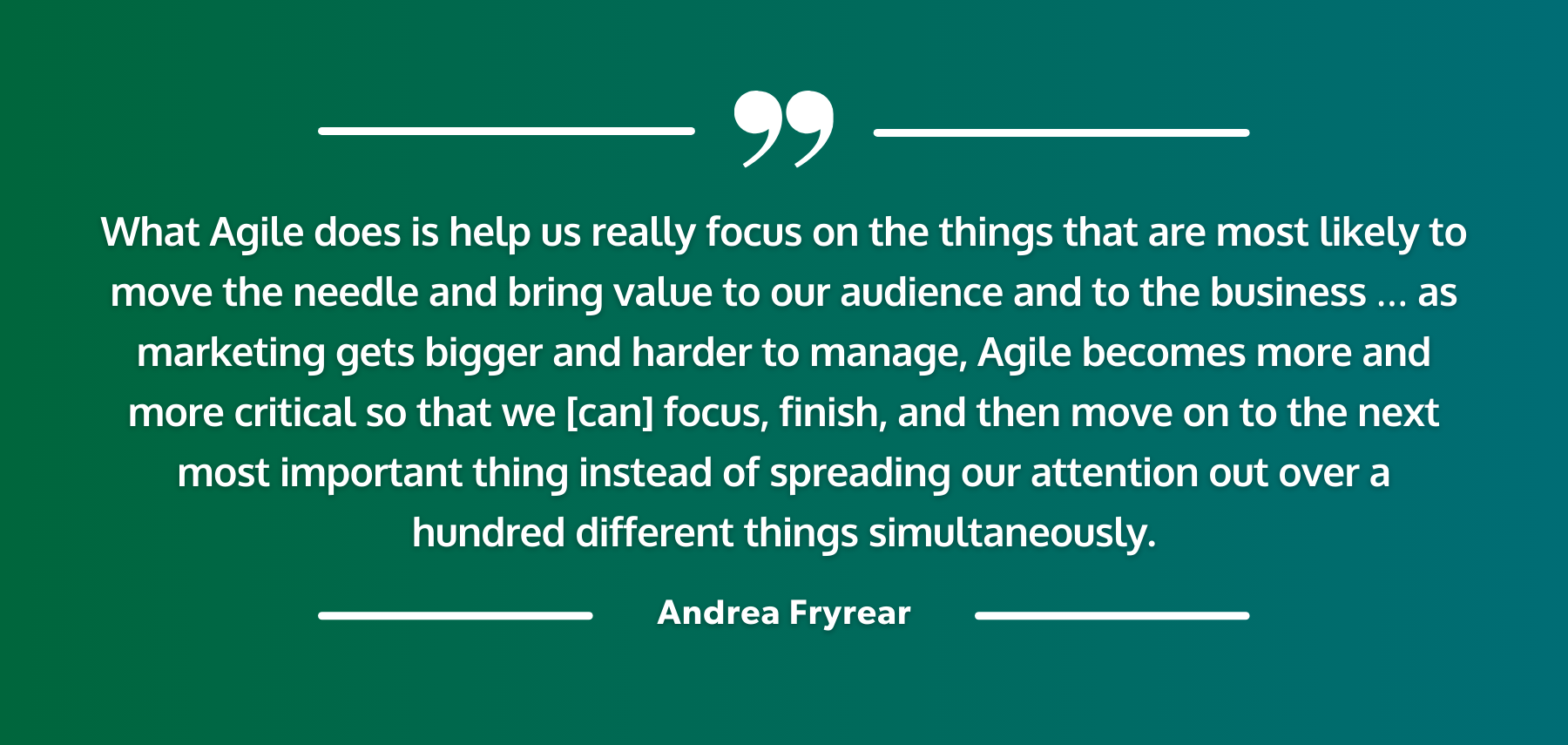
Agile methodologies emphasize the importance of rearranging marketing activities in a backlog, giving top priority to work that’s really going to make an impact, instead of wasting productive time on tasks that are less relevant. A typical Agile process commences with sprint planning, proceeds to execution, and concludes with retrospectives.
These swift and iterative cycles, oftentimes called sprints, are in harmony with the broader marketing strategy, organizational priorities, and long-term goals, ensuring that the team's daily activities align with the bigger picture.
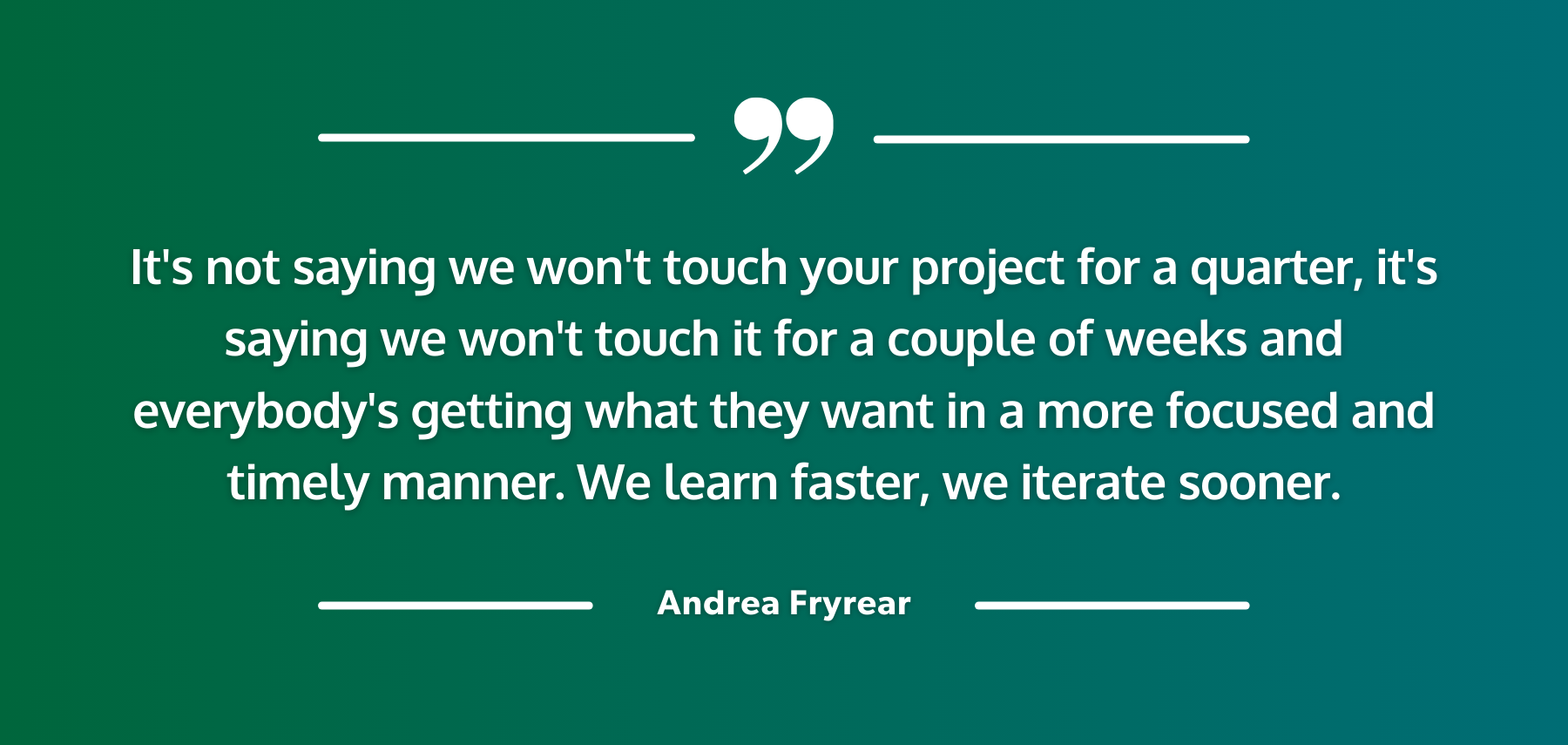
While there are lots of practices that can make up an Agile process, Agile marketing starts with a mindset that includes values like customer-centricity, adaptability, and collaboration. After it’s in place across your team, you can progress from being Agile in your mindset to doing Agile in your practices.
Keep in mind: No Agile program is going to be the same from one company to the next, and there can even be variation between departments. But, at the heart of it, maintaining and encouraging an Agile mindset is the start of creating a solid foundation for flexible and fulfilling work.
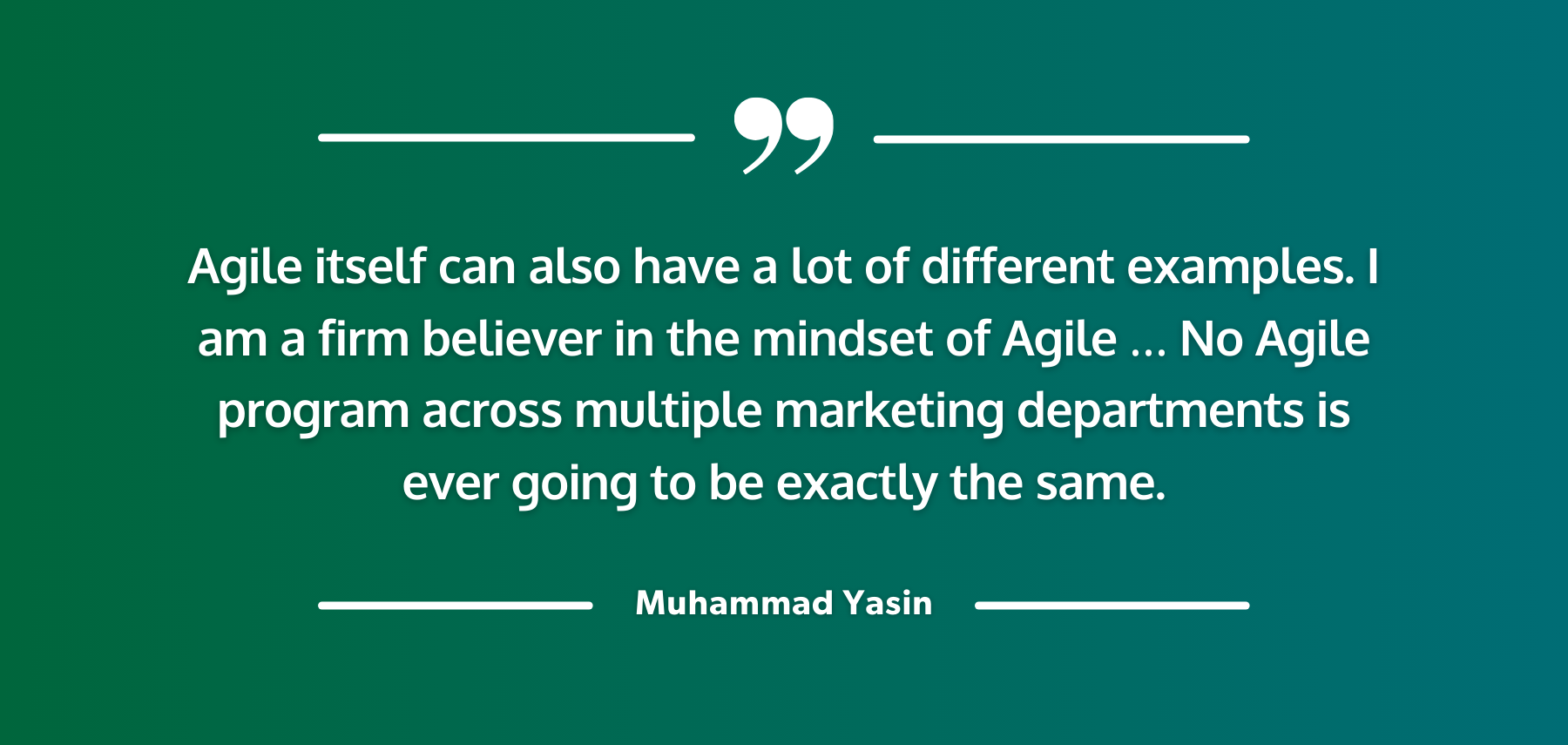
Below are some of the core values that drive Agile marketing methodologies, as articulated in The Agile Marketing Manifesto:
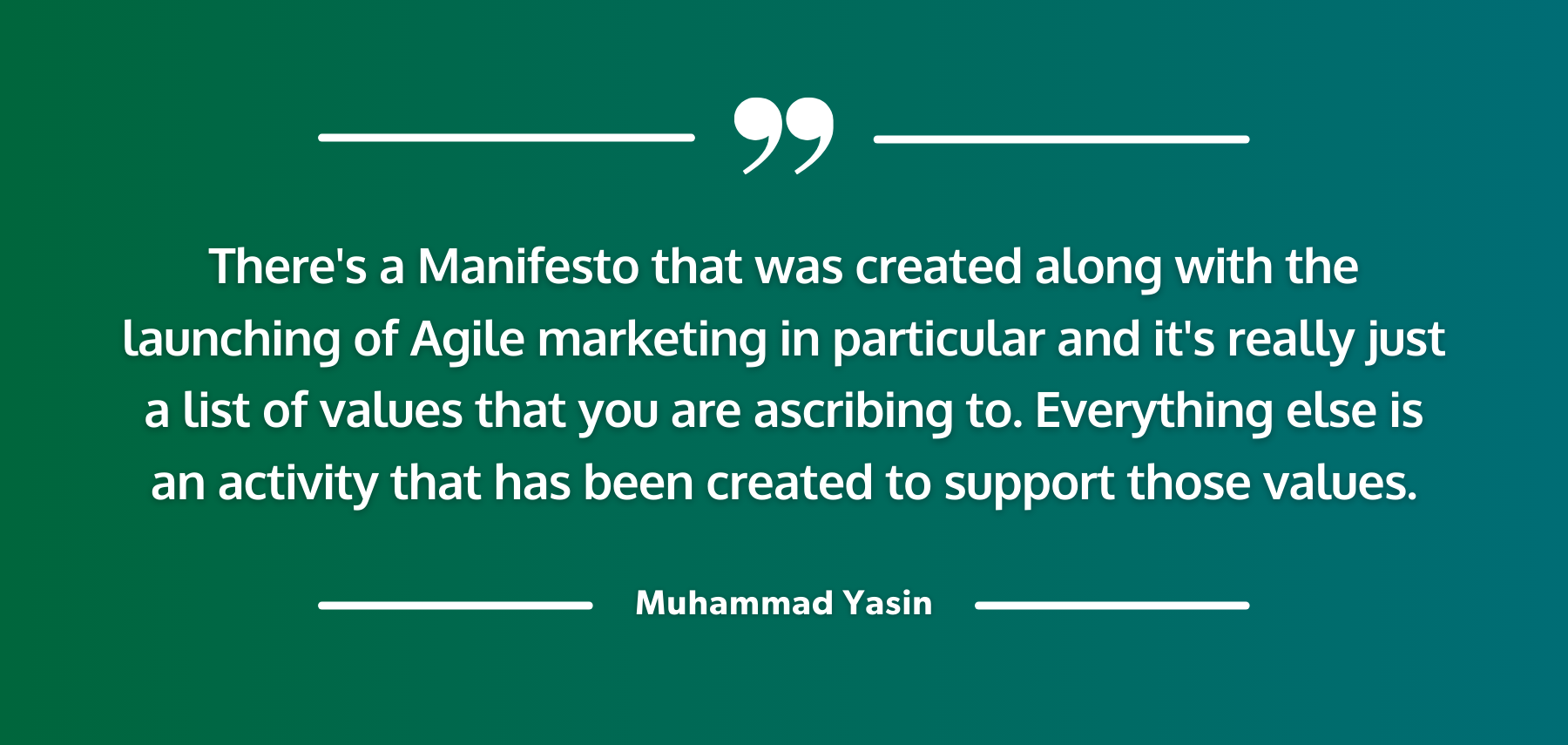
It may require a big change in how you think and work, but Agile marketing yields results that make it all worthwhile:
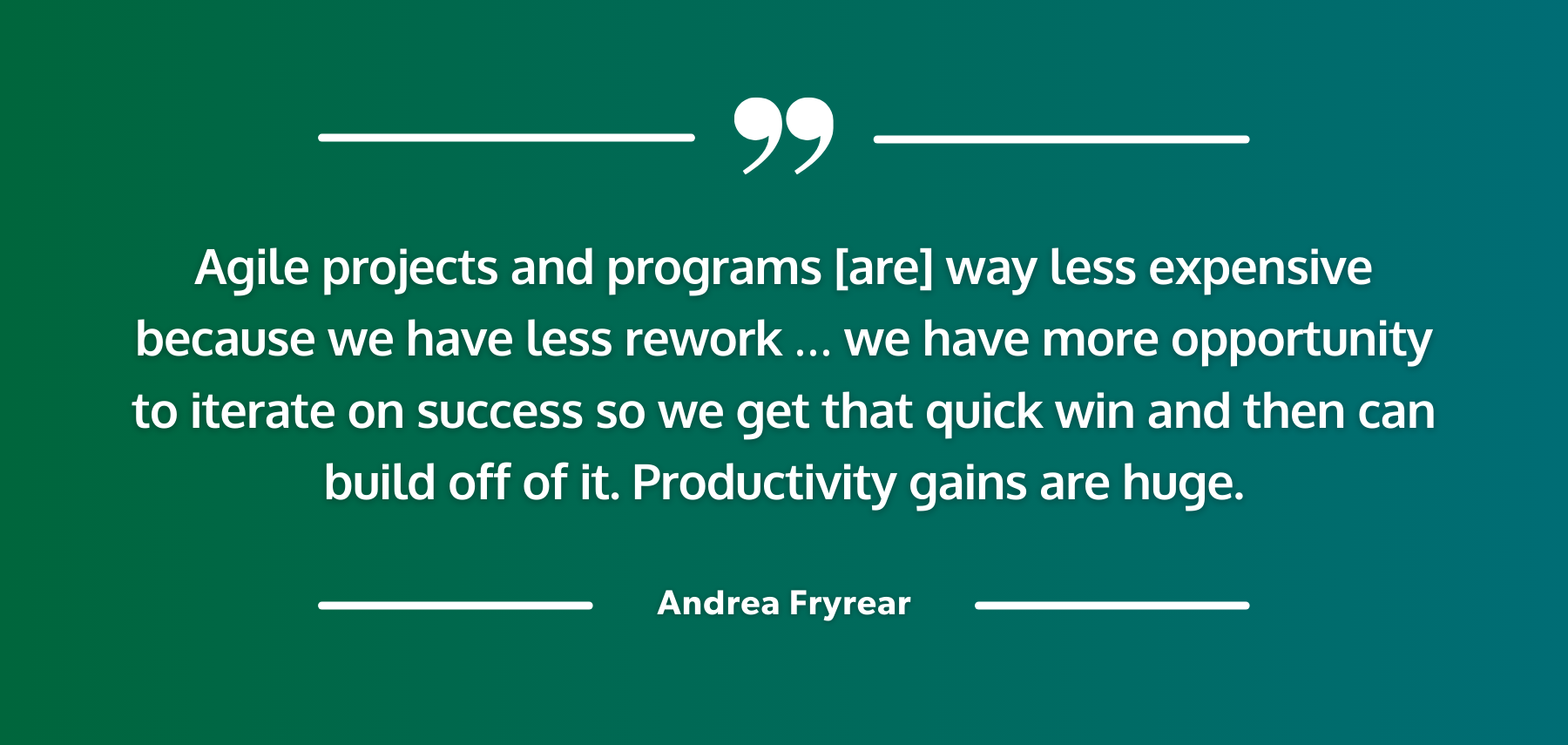
To showcase how Agile Methodologies can be put into practice, we took viewers on a quick tour of Tenon’s Agile Capabilities including the ability to organize sprints, enhance project visibility using a Kanban board, and maintain team alignment with a built-in retrospective feature. To see for yourself, we invite you to request your own Agile tour.
Following the presentation, Andrea and Muhammad addressed audience questions around implementing Agile marketing:
Andrea: Yes. That’s where the most value comes from. Teams get frustrated when they work with non-Agile teams, because they move at a different pace and with a different style of urgency. You might have different levels of rigor, but you get the most bank for your buck when everyone is Agile.
Muhammad: You should go visit other departments that use Agile planning first to see what works and how you can communicate back and forth across your organization. You can adjust your Agile practice to match other departments for better collaboration.
You put a lot of work into the practice, so sharing makes teams feel great and leads to communication breakthroughs. Marketing is traditionally a silo in organizations, so Agile marketing breaks that down and creates shared language and processes.
Andrea: There are a lot of options for organizational structure. Some teams are functionally organized initially, so Agile can be implemented within those structures. But breaking beyond those and working in a way that is customer centric when you can is the ideal state.
You can have demand generation and top of funnel teams, all the way through teams focused on retention or upselling. You can create cross-functional teams dedicated to those steps based on the customer journey. Budget, head-count, and hiring all play a role as well.
Andrea: We have a competitive advantage as marketers, because we can customize messages for stakeholders. By looking at the business and organizational metrics, you can provide productivity savings and the impact on the bottom line. Agile marketing is more than just a cool idea, it delivers results. When you position Agile marketing that way, you get the buy-in that you want faster.
As these marketing experts shared, Agile marketing offers a transformative approach that can drive exceptional results for businesses, making it crucial to reevaluate how marketing teams approach their processes and structures. The benefits are substantial, including cost savings, increased productivity, and greater chances of success.
If you're eager to start your Agile marketing journey, we encourage you to reach out to the AgileSherpas experts or the Tenon team for more – we’d love to support you on your Agile transformation.
Jessica Engel is the Senior Director of Marketing for Tenon, a Marketing Work Management solution built on ServiceNow. An experienced digital marketer focussed on accelerating B2B SaaS startups, Jessica previously worked as the Director of Marketing for Encamp, managed marketing operations at Terminus Software, and ran demand generation at Sigstr. A graduate from Chapman University with a degree in Advertising and Marketing, Jessica is passionate about driving growth through thoughtful branding, messaging, and creative campaigns.
Subscribe to our blog to get insights sent directly to your inbox.
Subscribe to our blog to get insights sent directly to your inbox.